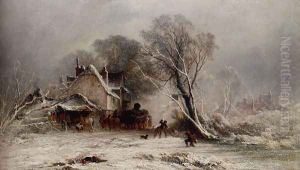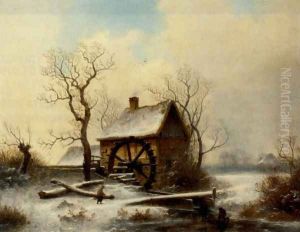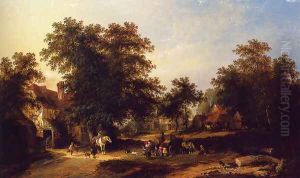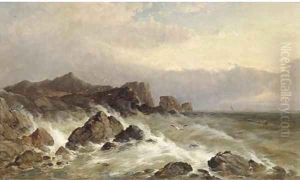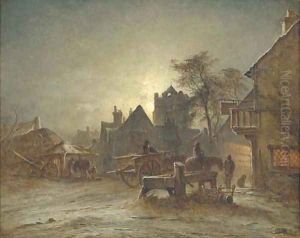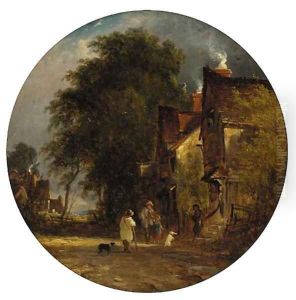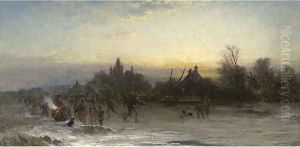George Augustsus Williams Paintings
George Augustus Williams, born in 1816, was a prominent British landscape painter part of the notable Williams family of painters, often referred to as the Barnes School. His father, Edward Williams, also a distinguished landscape painter, greatly influenced George and his siblings, who all pursued careers in art. This familial legacy has made the Williams family a unique and significant contributor to British art in the 19th century.
George's work predominantly focused on the English countryside, capturing the serene and pastoral landscapes with a refined attention to the nuances of light and atmosphere. His paintings often depicted the Thames and its surrounding areas, where he spent much of his life. Williams was known for his ability to convey the peaceful and idyllic aspects of rural England, a theme that resonated with the Victorian audience's nostalgia for nature amidst the era's rapid urbanization and industrial growth.
Throughout his career, George Augustus Williams remained an active and dedicated artist, contributing regularly to exhibitions. He exhibited at prestigious venues such as the Royal Academy, the British Institution, and the Royal Society of British Artists, a testament to his skill and popularity. Despite the acclaim, he often stayed out of the limelight, preferring the quietude of his artistic pursuits over fame.
Williams' legacy is preserved through his extensive body of work, which continues to be appreciated for its technical skill and emotive portrayal of the English landscape. His paintings are held in various collections and museums, serving as a testament to the enduring appeal of his tranquil and picturesque views. George Augustus Williams passed away in 1901, leaving behind a rich oeuvre that captures the timeless beauty of England's countryside.
